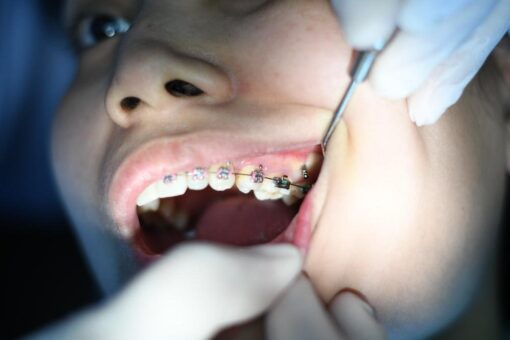When a dentist decides to specialize in orthodontics, they often wonder why dentists are allowed to practice it. After all, aren’t specialists supposed to have expertise above and beyond general dentists? Orthodontics is not a specialization. It’s actually a sub-specialty of dentistry that requires the same level of training as any other. However, many people tend to think that only specialists or general practitioners can practice certain branches of dentistry. This is because most states require individuals who want to become specialised in an area of dentistry to first complete dental school and internship before being accepted into a residency program.
Why are dentists allowed to practice orthodontics?
Orthodontics is the practice of correcting such dental issues as misalignment of teeth, improper bites, or other abnormal dental conditions. Orthodontists are dental specialists who are trained to correct such dental problems. There are actually two types of professionals who are licensed to practice orthodontics. These include dentists and dental specialists known as orthodontists. Orthodontists are dentists who have undergone an additional two to three years of specialized training in orthodontics.

The reason why dentists are allowed to practice orthodontics is because this is a sub-specialty of dentistry where an individual dentist completes additional training to become more proficient in specific areas of dentistry. For example, a dentist specializing in orthodontics would be expected to have a greater level of expertise in areas such as tooth movement and the complex mechanics of growing teeth than a general dentist.
How does a dentist become an orthodontist?
To become an orthodontist, a dentist must first complete the same level of dental education as a general dentist. This means enrolling in and graduating from a dental school accredited by the American Dental Association (ADA). Once an aspiring dentist has completed their undergraduate studies, they must next apply to and be accepted into a dental school and earn a Doctor of Dental Medicine (DDM) degree.

After completing their dental education and earning their degree, a dentist must then complete a one-year general dental practice residency. Next, they must take and pass the ADA-administered written and clinical examinations needed to become a certified dentist. Once a dentist has completed these requirements and received their certification, they must go through a state-approved residency program in orthodontics. They must also pass a state examination in orthodontics in order to become a licensed orthodontist.
What is the difference between an orthodontist and a dentist?
Orthodontists and dentists are both dental professionals who treat dental issues such as misaligned teeth, gums, or bite problems. The difference between orthodontists and dentists is that the former are required to have an additional two to three years of specialised training in orthodontics after completing dental school, whereas dentists don’t need any additional training to become orthodontists in most states.
Orthodontists have a broader grasp of dental issues and can offer a wider variety of treatment options to patients than dentists. This includes the ability to place braces on patients at any age or stage in life, including on babies as young as 6 months old. Orthodontists can also correct more complex dental issues than dentists. In fact, many dentists prefer to refer patients to an orthodontist whenever their cases are beyond their ability to treat.
Dentistry and Orthodontics
In dentistry we have specialist areas such as oral surgery, endodontics, periodontics and orthodontics. As a general dentist I do some of all of these things. That is, I take out teeth, do root canals, clean under the gum line and do orthodontics. However I refer out cases that I am not happy to treat in any of these disciplines.
To give you an example, some orthodontics is very simple, such as correcting a single tooth anterior cross bite in a 9 year old. Some orthodontics is hard such as dental and skeletal openbite cases.

A dentist work within their area of training and competence. Orthodontics is not some mystical art, but full fixed braces requires more knowledge than is provided at most dental schools. I have done years of courses on orthodontics and I am happy to treat some full fixed cases. I am also happy to refer cases that I do not want to lay awake at night worrying about.
Conclusion
Orthodontics is a sub-specialty of dentistry where a dentist completes an additional two to three years of specialized training in order to become more proficient in specific areas of dentistry. The difference between an orthodontist and a dentist is that the former are required to have an additional two to three years of specialized training in orthodontics after completing dental school. Whereas dentists don’t need any additional training to become orthodontists in most states.
As a result, orthodontists have a broader grasp of dental issues and can offer a wider variety of treatment options to patients than dentists. This includes the ability to place braces on patients at any age or stage in life, including on babies as young as 6 months old. Orthodontists can also correct more complex dental issues than dentists. In fact, many dentists prefer to refer patients to an orthodontist whenever their cases are beyond their ability to treat.






